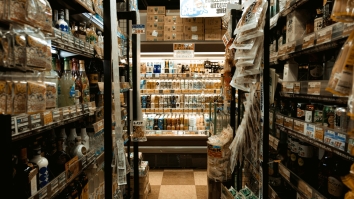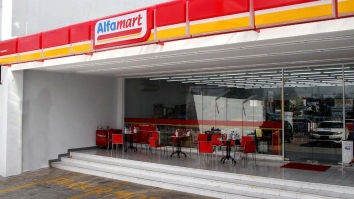Rapid transformation brought Asia retailers into the digital age. What’s next for retail tech?
By Chua Hock LengAs the holiday season revs up to its climax, retailers have much to celebrate even as they prepare themselves for one final last-minute Christmas shopping spree.
Take the recent Singles’ Day shopping festival, for example. China’s e-commerce juggernaut Alibaba alone reported that gross merchandise value (GMV) over its 11-day campaign grew to a record 540.3 billion yuan (US$84.5 billion), an 8.45 percent year-on-year growth.
What started as an online shopping festival in China has today taken root all over the world, and brands as diverse as apparel and automobiles have joined the fray by offering discounts and promotions.
Many retailers today were in a robust position to take advantage of this opportunity. Thanks to the pandemic, the industry has undergone massive change over the past two years as many were forced to hurriedly implement digital transformation within weeks or months instead of following original plans that might have stretched over several years.
However, despite the apparent success for many retailers this year-end shopping season, it is important for retailers to not rest on their laurels and continue to see digital transformation as an on-going journey instead of a finish line that they have crossed.
Trends and challenges shaping post-pandemic retail
For one, the volume of online shoppers will continue to rise exponentially.
A new report from Google, Temasek Holdings and Bain & Company found that the internet economy in Southeast Asia is projected to hit $1 trillion in GMV by 2030 as online shopping becomes the norm.
The COVID-19 pandemic had a significant role to play in this surge, causing a rise in the use of digital services such as online shopping and food and grocery delivery.
In a world where consumers can shop from anywhere in the world at any time they like, competition has also become more intense than ever. Choices are abundant, and consumer expectations around incentives like discounts and free shipping make it a challenge to profit from already razor-thin margins.
Another significant trend impacting the retail industry has been the rise of social influencers. While the trend had emerged and begun to grow before the pandemic, it went into overdrive when the vast majority of shoppers turned to social media as an outlet for their stress, boredom, or anxiety over being stuck at home.
Today, 71 percent of consumers say they’re more likely to buy something because of a social influencer. This leads to the challenge of predicting and preparing for unexpected bursts of customer activity that can occur at any time, not just seasonal fluctuations like Christmas or Singles’ Day. Even the slightest slowdown in your online storefront’s performance can mean lost sales and disgruntled customers.
It’s not just e-commerce businesses that have been forced to change. Retailers with brick-and-mortar stores are being driven to use advanced technologies to differentiate themselves from competitors and offer value-added services that keep customers loyal and satisfied.
These technologies include internet of things (IoT) devices and sensors, which allow retailers to offer in-store features such as smart shelves with dynamic pricing displays, augmented or virtual reality capabilities, or smart beacons that detect where customers are in the store and alert them to relevant specials.
Data as the foundation for next-generation retail experiences
Clearly, there’s no going back for the retail industry, even as the global economy begins to recover. Consumer behaviour has been forever altered, and new trends will continue to give retailers a run for their money.
Omni-channel retailing, shifting customer loyalty, and increased engagement along the sales cycle are just some of the immediate challenges retailers are facing as the world emerges from the pandemic.
Crystal ball gazers will no doubt recommend even more technology to solve some of the more complex challenges that lie ahead. Indeed, according to IDC’s Retail Digital Transformation (DX) Infrastructure 2021 Investment Guide, the majority of retailers plan to increase spending in technologies like IoT, augmented reality (AR) and mobile apps/devices.
These technologies all have one thing in common: they generate a lot of data.
Data is a fundamental component of digital transformation, and retailers that focus on tapping into the full potential of their data will be in pole position to take advantage of these new technologies and leapfrog their competition.
Every single transaction on your online shop, for instance, creates more data about that customer and their shopping behaviour. Past purchases, browsing habits, personal information like birthdays all add up to a veritable gold mine of data that retailers may just be sitting on, like the fabled dragon hoarding its caves of gold without using it.
If the data is properly stored, managed, and analysed, you open a new world of possibilities—to streamline operations, create new revenue streams, gain seriously deep insight into customer trends and preferences, optimise supply chain processes and product pricing, and much more.
More specific examples of how data can benefit your retail business include:
- Boost customer acquisition and loyalty by using insights to deliver ultra-personalised experiences when and where they matter most.
- Identify high-value customers and capitalise on their behaviours by reaching them in the most effective ways.
- Optimise the supply chain and operations by identifying bottlenecks and process breakdowns, and tracking the movement of products inside stores and in transit.
- Make pricing competitive and dynamic, through real-time data about similar products on competitors’ websites, etc.
- More accurately forecast demand and sales volume, despite wide seasonal fluctuations and ever-changing customer preferences.
In short, a solid foundation in storing, managing, and analysing data will enable all retailers to set the stage for success, no matter their stage of transformation or what cutting-edge new technology they may be looking at implementing to tackle the challenges of the future.
























 Advertise
Advertise








